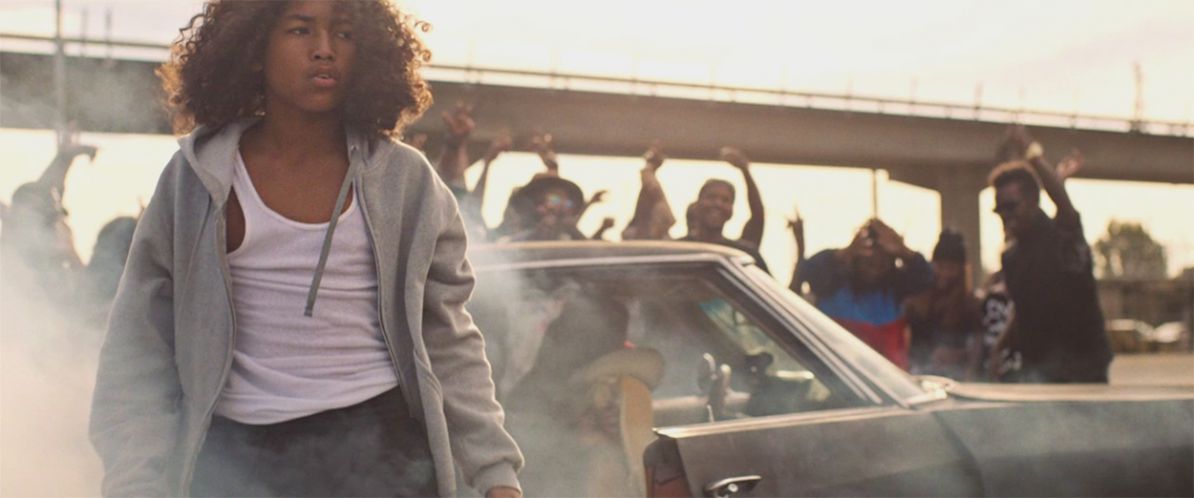In 1895, so the story goes, Auguste and Louis Lumière premiered their 49-second film The Arrival of a Train at La Ciotat Station, introducing an audience to the new medium of cinema. Panicked filmgoers, unable to distinguish representation from reality, cowered in terror, apparently under the impression they were going to be crushed beneath the locomotive.
It’s a charming foundational anecdote, the kind of tall-tale that gives shape and scope to people’s sudden engagement with unfamiliar technology and modes of expression, or at least the kind of story later generations apparently wanted to believe for reasons of our own. (In this way, the Lumière Brothers story isn’t so different from the Parisian “riots” that supposedly greeted Stravinsky’s Rite of Spring 13 years later.)
Unfortunately, it’s not supported by any additional evidence aside from its own legend — in fact, the film wasn’t even included at that famous premiere. But the story was too good to pass up, and enough for it to persist for over a century. Like all legends, it’s apparently one we need. Some have even gone so far as to call it the “first horror movie” because of the visceral reaction it allegedly provoked.
This close association between the cinema and the train is fascinating for a few reasons. It’s not hard to see its appeal: the kinetic nature of the vehicle’s technology is well-suited to a medium premised on capturing motion, and what better way to exhibit the possibilities of the moving picture than a representation of movement itself?
This thinking has the added benefit of highlighting the fascinations of futurism in the years to come, while also drawing a line in the mimetic sand between radical depictions of stillness (in Ozu, say, who incidentally loved nothing more than contrasting that stillness with “progress,” the hustle and bustle of the train as metaphor for life’s transitions) and the people-in-a-car fixations of someone like Kiarostami.


In both cases, transit itself conjures the tensions of modernity, and the alienation they provoke from anyone who wants to sit still for a minute. Our protagonists are both here and not-here, somewhere in between, and our recognition or identification as viewers shifts just as easily.
As stand-ins for the built environment and the medium through which we’re looking at it, these vehicles are imbued with meaning, and provide a setting through which to understand the trapped characters speeding across the land. And the irony, as ever, is that a steady shot in such close confines, with the world flickering by, provokes both uncomfortable proximity and constant, disassociative distance. Or in other words, movies that take place in transit are always, on some level, about movies themselves.
I watched Justin Tipping’s Kicks the other night, a film I disliked for a variety of reasons. But this debut, set in the East Bay I call home, gets at least one thing profoundly right, and that’s the ubiquitous presence of public transit. Like the much better Fruitvale Station, which focuses on BART trains for tragically obvious reasons, Kicks places the train front and center.


Tipping’s narrative emphasizes the way distance is felt for his characters; a BART ride from Richmond to Oakland is depicted as a boundary-crossing, a voyage. And this, I think, is how many of us feel, even those of us who are not in danger for making the journey. The train marks a connecting thread and a separation, which Tipping cannily depicts from the perspective of kids who probably haven’t much left their neighborhood in years.
But it’s not simply boarding the train that indicates this. The constant click and clack of BART cars, overhead (and I really did use to live directly under one) or somewhere close by, is like the East Bay soundtrack. If San Francisco is synonymous with the improbable hills of muscle-car-fueled masculinities (see: Bullitt), the East Bay is its working-class cousin, a network of train towns, ports, and mass transit. (I can only imagine how New Yorkers must view the depictions of their city.)
In both Kicks and Fruitvale, the built environment is as much aural as material. There’s an inescapable sense of movement, you hear it everywhere you go, and this has the paradoxical consequence of invoking a feeling of being trapped, even if you’re surrounded by the built communities you cherish. You could always leave, but on the other hand, no, not really.
So we arrive at this idea, again, of in-between. Our technologies allow for escape, but they also somehow preclude it. And they never cease to remind us where we are, by depicting somewhere else. As the Lumières demonstrated over a century ago, film is uniquely positioned to make this clear.

